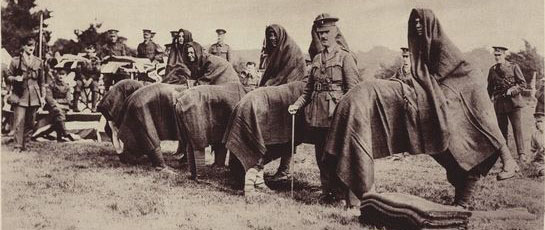
Look and Learn Collection WWI – Passing Time on the Front Line
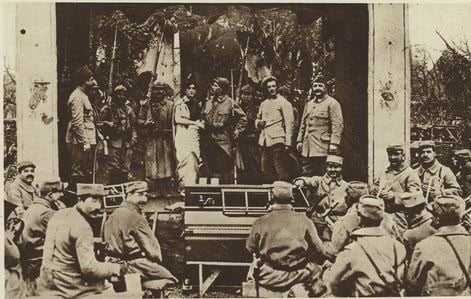
The lighter side of the world’s greatest war, Vive La France! A picturesque tableau at the open-air theatre near Verdun (b/w photo), English photographer, (20th century) (after) / Private Collection / © Look and Learn / Bridgeman Images
When the men were not fighting, they would have to find ways to pass the long tedious hours. These were also opportunities to find a way to recreate some moments of normality in an otherwise surreal and unpredictable situation.
Using images for our Look and Learn Collection, I would like to illustrate these lighter moments in the life of the World War I soldier.
Theatre
Shows were a common fixture on the front lines and at base camps during the Great War, and each country had a different approach to their organization because of their different ideas about entertainment and the different positions occupied by civilians. While the British Army invited a concert party to come from England as early as December 1914, the French Army authorized the first theatrical performance given by civilians in February 1916. In addition, while in an army of conscripts most talented performers were drafted and had little spare time, in an army of volunteers, more (civilian) professionals were available but they had limited mobility and often charged for their services.
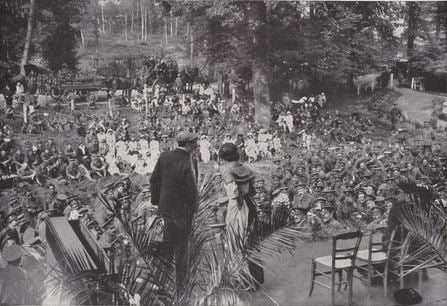
Entertainment near the trenches, an open-air concert for soldiers at the front, in France (b/w photo), English photographer, (20th century) (after) / Private Collection / © Look and Learn / Bridgeman Images
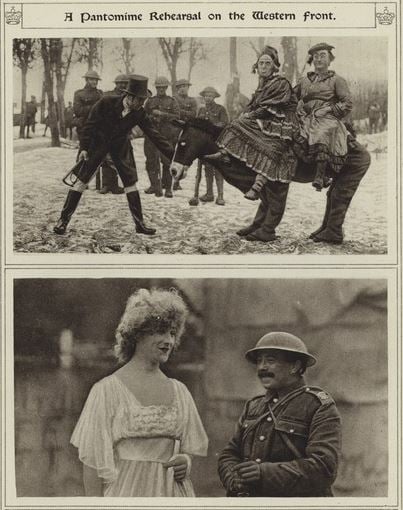
A Pantomime rehearsal on the Western Front, reminiscent of “The Lane” on boxing night, “The Ugly Sisters” and Cinderella (b/w photo), English photographer, (20th century) (after) / Private Collection / © Look and Learn / Bridgeman Image
Games
Games also played a part in the soldiers lives. Card games and gambling were very popular ways to pass the time, as well as sports like cricket and football. During the Christmas truce in 1914 some of the most memorable scenes were of soldiers from German and Allied sides playing football together.
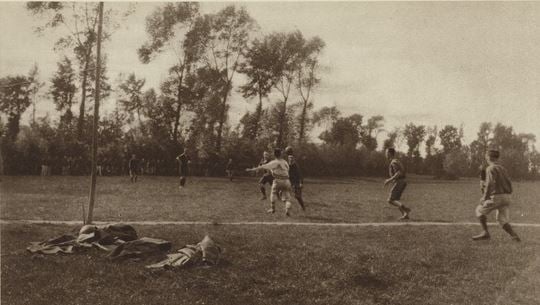
Soccer at the front, Belgians follow the English example in the intervals of fighting (b/w photo), English photographer, (20th century) (after) / Private Collection / © Look and Learn / Bridgeman Images
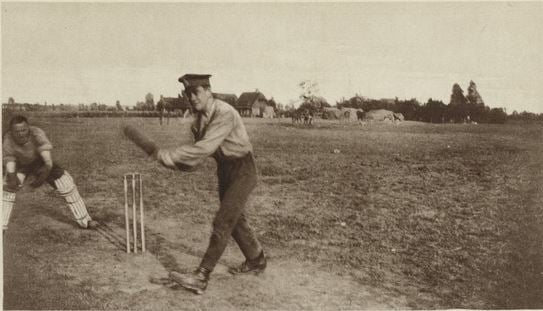
Cricket replaces football at the front, British soldiers in a match behind the lines somewhere in France, or Flanders (b/w photo), English photographer, (20th century) (after) / Private Collection / © Look and Learn / Bridgeman Images
Music
Music was a great lifter of spirits. Popular songs among British troops were “Its a Long Way to Tipperary”, and “Pack Up Your Troubles in Your Old Kit Bag”, which helped to keep moral up. Concert parties were organised in which other soldiers would entertain the troops by dressing up and performing a variety show.
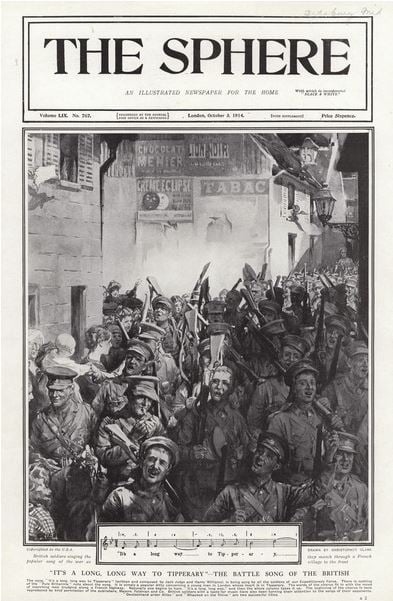
It’s a Long, Long Way to Tipperary, the battle song of the British, World War I (litho), Millar, Addison Thomas (1850-1913) / Private Collection / © Look and Learn / Bridgeman Images
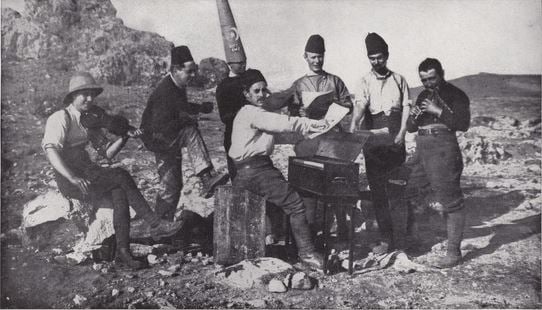
Christmas festivities with the British forces in the Mediterranean, a merry party rehearsing for a concert (b/w photo), English photographer, (20th century) (after) / Private Collection / © Look and Learn / Bridgeman Images
Film
Although cinema was still relatively new during the First World War, troops were shown films to provide some escapism.
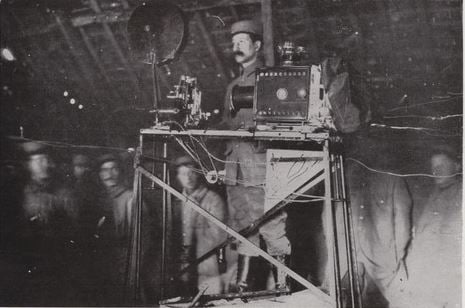
The cinematograph in war, an official operator with the French Army showing films among troops in Northern France (b/w photo), English photographer, (20th century) (after) / Private Collection / © Look and Learn / Bridgeman Images
Rat-catching
Catching rats was also an (unpleasant) pastime for many soldiers. Rats were a major pest in the trenches as the following testimony from a WWI soldier attests:
“Whilst asleep during the night, we were frequently awakened by rats running over us. When this happened too often for my liking, I would lie on my back and wait for a rat to linger on my legs; then violently heave my legs upwards, throwing the rat into the air. Occasionally, I would hear a grunt when the rat landed on a fellow victim.” (R L Venables)
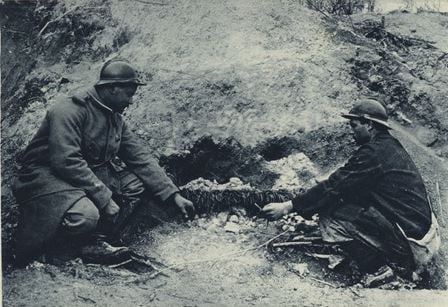
Rats’ tails worth a penny a-piece in French trenches! A soldier rat-hunter delivering his trophies to an NCO (b/w photo), English photographer, (20th century) (after) / Private Collection / © Look and Learn / Bridgeman Images
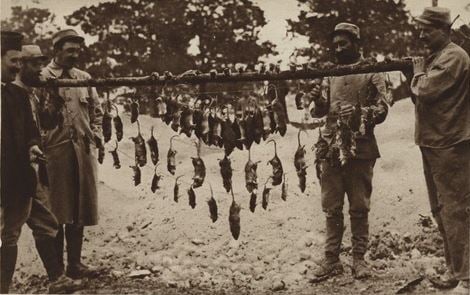
Rats, a greater trench-worry than the Germans! A French soldier’s catch on exhibition (b/w photo), English photographer, (20th century) (after) / Private Collection / © Look and Learn / Bridgeman Images
Letter writing
Soldiers wrote letters in spare moments, sometimes from front line trenches or in the calmer surroundings behind the lines. Censorship dictated what servicemen were permitted to disclose in their letters. However, in practice, men often found ways to impart information, and their letters offer a powerful and highly personal insight into the experience of war.
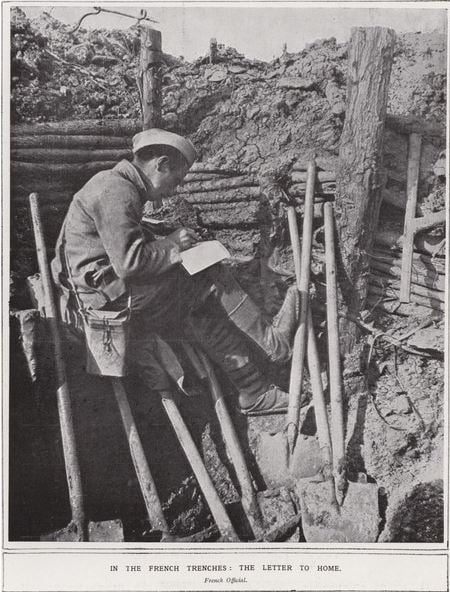
In the French trenches, the letter to home (b/w photo), English photographer, (20th century) (after) / Private Collection / © Look and Learn / Bridgeman Images
Find out More
Look and Learn originated as a British weekly educational magazine for children, published from 1962 until 1982.
Taking inspiration from history, nature, world religions, science and literature, images for the magazine were provided by some of the best illustrators of the twentieth century. Specially commissioning all of its content, contributors included Peter Jackson, Ron Embleton, and C. L. Doughty.
View all images from Look and Learn in the Bridgeman archive
Get in touch at uksales@bridgemanimages.com for licensing and copyright queries
